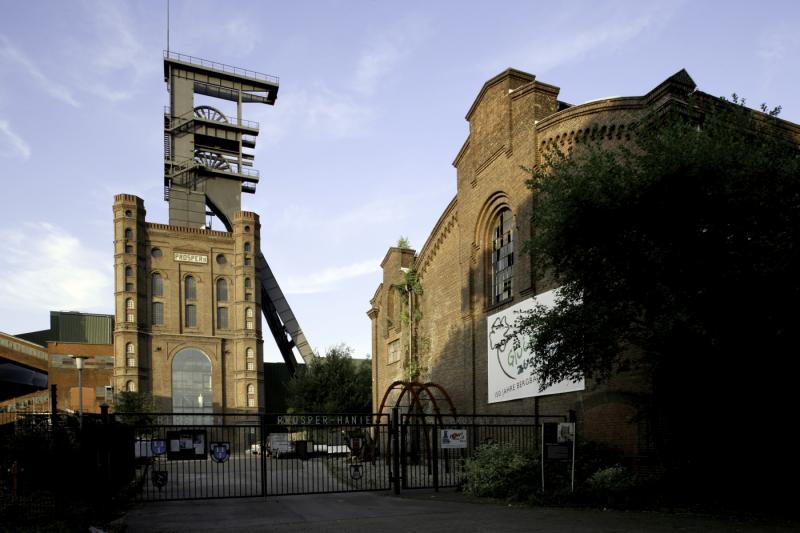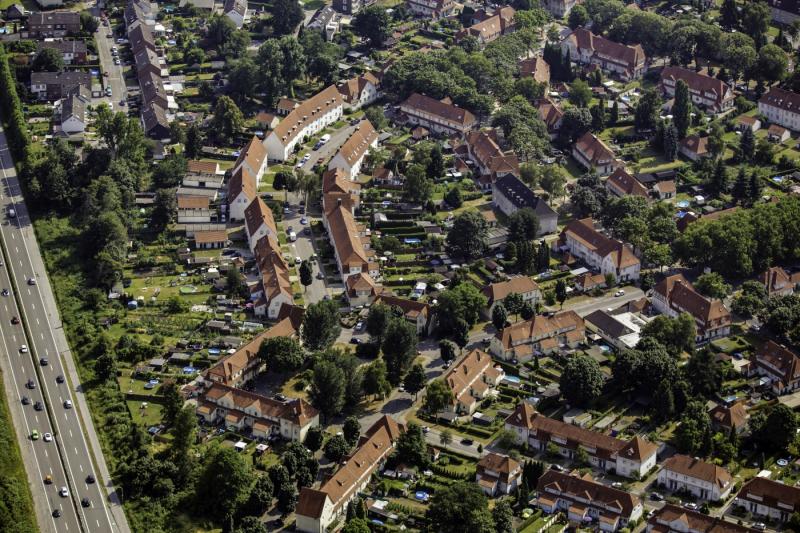In der Welheimer Mark 158, 46238 Bottrop
1991-1996
JOURDAN & MÜLLER Projektgruppe Architektur und Städtebau
(sewage plant and structural design)
Büro Landschaft Prof. von Reiß
(landscape architecture)
Hansen und Petersen
(exhibition hall)
Advanced search with more criteria
Total projects: 483

46238 Bottrop
Distance: 1.56 km

46238 Bottrop
Distance: 1.77 km

46238 Bottrop
Distance: 2.46 km
At a capacity of 1.3 PT, Kläranlage Bottrop is one of the largest and most modern in Europe and has been a decisive factor in the renaturation of the River Emscher and its system. The works went on stream at the end of 1996 and treats domestic and industrial waste water from Bottrop, Gladbeck, Essen and Gelsenkirchen that is fed in through the Boye and the large waste water canal running parallel to the Emscher. Water from the Emscher is also treated here. The plans had to provide for an inclusion of the sewage works in the regional green stretch C of Emscher Landschaftspark (landscape garden).
The works was built from 1991 to 1996 on an area of 147,000 sq m. The site had previously been occupied by the Emscher Flusskläranlage Bottrop (river cleaning plant) built in 1928, which cleaned the entire River Emscher. However, the water was only mechanically treated. Solute pollutants and phosphorus and sulphur could not be removed. The new sewage works cleans up to 8,500l of water a second. The huge number of sedimentation tanks covers an area of 58,000 sq m.
The digester with its four 54m tall towers has a total capacity of 60,000 m³ and is thus the largest in the world. The digester gas is used for the sewage works’ power supply. Its own gas-fired power station produces so much power that 6,500 households could be supplied.
At the car park at Welheimer Mark, next to the entrance to the sewage works, starts a path that leads around the works and over the Emscher levy to the B 224 road. From the observation hill, you have a good view of the extended group of sedimentation tanks. You can also reach it from the car park. Under the turf, the hill is made of dried sewage sludge.
The works include a removable pavilion that from 1994 to 2001 housed exhibitions on the renaturation of the River Emscher. This pavilion was awarded a Deutscher Stahl-Preis.
Author: Route Industriekultur / Editorial baukunst-nrw
Last changed on 23.06.2009
Categories:
Engineering » Water Management